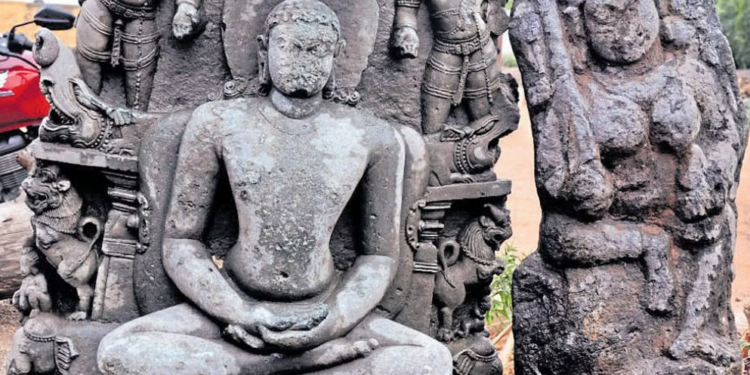In a significant archaeological discovery, 18 ancient sculptures, including Shaiva and Buddhist deities, have been unearthed along the banks of the Baitarani River near Maninathpur village in Bhadrak district, Odisha. These artefacts, dating back to the 6th or 7th century CE, were found earlier this week in the Bhandaripokhari block and have since been handed over to the Buddhist Vihara Museum for preservation and display.
The artefacts were stumbled upon by a local youth, Bibekananda, during a morning walk. Recognizing its importance, he alerted members of the Indian National Trust for Art and Cultural Heritage (INTACH) and young researcher Biswambhar Raut, who further explored the site. Raut identified the presence of intricately carved miniature temples, ‘argha stupas,’ and sculptures depicting deities from both Shaiva and Buddhist traditions.
Renowned archaeologist Sunil Pattnaik inspected the site and confirmed the historical and artistic significance of the artefacts. Crafted from Khondalite stone, the sculptures include depictions of Shaiva deities such as Shiva, Parvati, Ganesha, Bhairava, and dancing figures, as well as Buddhist icons like Buddha, Tara, and Padmapani. These masterpieces reflect the artistic excellence of the 6th–8th centuries CE.
According to District Culture Officer Tanuja Sirka Singh, the artefacts were promptly relocated to the Buddhist Vihara Museum for preservation after INTACH was notified. Pattnaik emphasized the discovery’s importance in understanding the intertwined cultural and religious heritage of Shaivism and Buddhism in ancient Odisha.
This find highlights the rich historical and artistic legacy of the Bhadrak region and underscores the need for continued efforts in preserving such treasures for future generations.
In a significant archaeological discovery, 18 ancient sculptures, including Shaiva and Buddhist deities, have been unearthed along the banks of the Baitarani River near Maninathpur village in Bhadrak district, Odisha. These artefacts, dating back to the 6th or 7th century CE, were found earlier this week in the Bhandaripokhari block and have since been handed over to the Buddhist Vihara Museum for preservation and display.
The artefacts were stumbled upon by a local youth, Bibekananda, during a morning walk. Recognizing its importance, he alerted members of the Indian National Trust for Art and Cultural Heritage (INTACH) and young researcher Biswambhar Raut, who further explored the site. Raut identified the presence of intricately carved miniature temples, ‘argha stupas,’ and sculptures depicting deities from both Shaiva and Buddhist traditions.
Renowned archaeologist Sunil Pattnaik inspected the site and confirmed the historical and artistic significance of the artefacts. Crafted from Khondalite stone, the sculptures include depictions of Shaiva deities such as Shiva, Parvati, Ganesha, Bhairava, and dancing figures, as well as Buddhist icons like Buddha, Tara, and Padmapani. These masterpieces reflect the artistic excellence of the 6th–8th centuries CE.
According to District Culture Officer Tanuja Sirka Singh, the artefacts were promptly relocated to the Buddhist Vihara Museum for preservation after INTACH was notified. Pattnaik emphasized the discovery’s importance in understanding the intertwined cultural and religious heritage of Shaivism and Buddhism in ancient Odisha.
This find highlights the rich historical and artistic legacy of the Bhadrak region and underscores the need for continued efforts in preserving such treasures for future generations.





